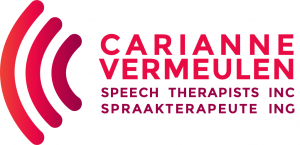What speech and language development can you expect to see at this age?
- Your child understands yesterday, today and tomorrow
- Follows three-step instructions without cues
- Speech is 75-90% intelligible
- Your child has an expressive vocabulary of 1500-1600 words
- Tells simple stories
- Begins to understands story sequences
- Asks a lot of questions
- Uses more complex sentences
- Combines sentences using and, but, if and who
- Uses direct requests with justification
- (e.g. “Stop that. You’re hurting me.”)
- Uses more pronouns (e.g. herself, himself, ourselves, yourselves, themselves)
- Uses some verb endings more consistently (e.g. kicked)
- Understands the function and purpose of print (e.g. books)
- Knows some letter names
- Understands comparative adjectives, such as big, bigger, biggest
- Uses language to resolve disputes with peers
- Speaks of imaginary conditions, such as “What if…” or “I hope…”
Activities to help stimulate your 4-5 year old child’s speech and language development
Make your child aware of single sounds. For example, tell your child “b” stands for “book” and “bear” and “ball”. Give your child some more examples and let your child try to think of more words.
Make your child aware of sounds in words. Let your child listen to a series of sounds and teach your child to put it together to form a word. (e.g. “Guess what word I’m saying now: c-a-t”). Start with 3-letter words and as your child shows success, increase the letters to four.
Make your child aware of words in sentences. Say short sentences (3-4 words) to your child. Then say the sentence again, but break the sentence up in words and clap your hands once when saying each word. Encourage your child to clap and say the words with you.
Read to your child. Draw your child’s attention to letters and sounds. Read, moving your finger, and point out some words and sentences. Let your child name the letters that are familiar to him/her.
Let your child tell his/her own stories. Write it all down on pages and let your child draw pictures to depict the main events.
Encourage your child’s speech. Allow your child to complete sentences and stories. (e.g. “When I get home I…” and “Long, long ago there was….”)
Make your child aware of his/her emotions. Name and explain a few emotions and encourage your child to tell you how he/she feels and why. Act out various emotions in front of a mirror.

